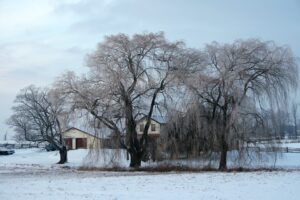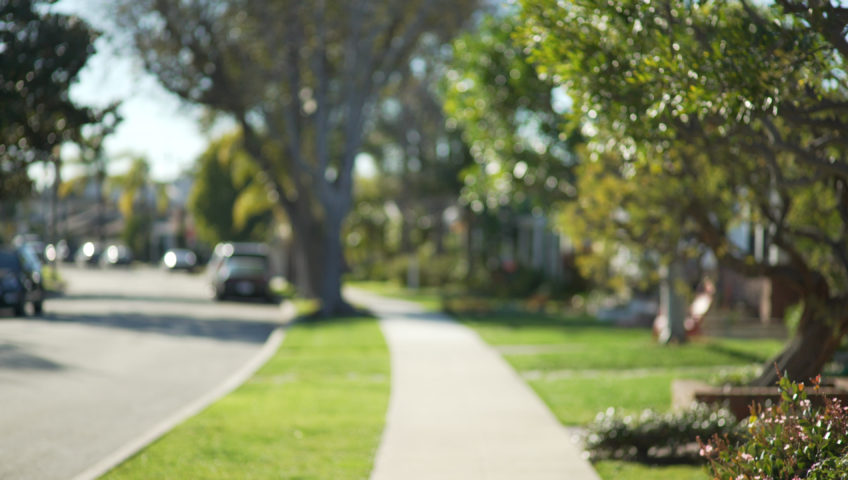Minnesota is home to many beautiful species of trees. From the northern forests to the southern plains, there are 53 species of trees that are native to Minnesota. If you live in a suburban or rural area, you probably have several different species of trees living on and around your property, and if you want to keep them beautiful, it’s important to take steps to maintain their health.
All trees benefit from well-timed trimming and pruning of dead or dying branches to allow the living parts of the plant to flourish. It’s also important to apply treatments that will defend your trees against Emerald Ash Borers and diseases. If you’re concerned about the health of your trees, you may want to consult a certified arborist.
Of course, the specific needs of trees vary by species. Depending on the scope of your arboreal knowledge, you might not know what types of trees are currently shading your yard. There are several easy ways to identify the common trees found in the Twin Cities.
Identifying Common Tree Species
The first step to tree identification is determining whether your tree is deciduous or coniferous. This is pretty easy; deciduous trees have leaves which they drop in the fall, coniferous trees have needles which they retain year-round. From there, you can more closely examine the leaves or needles, along with other factors such as bark texture, to identify a tree. These are some of the most common trees in Minnesota:
- Quaking Aspens: The single most common species of tree in Minnesota, quaking aspens are a deciduous tree found in all parts of the state, but most common in the northern forests. Aspens can quickly be distinguished from other native trees by their papery white bark marked by bumpy black scars from lost branches. The heart-shaped leaves of a quaking aspen are one to three inches long and green in spring and summer before turning to a brilliant gold in the fall. Aspens on your property should be pruned in late winter or early spring. Quaking aspens are susceptible to ink spot disease, a fungal infection which discolors leaves and causes them to drop early, inhibiting the growth of aspens.
- Red Maples: There are several types of maple trees in Minnesota, the most common of which is the red maple. Red maples are found across eastern Minnesota, from the Twin Cities up to the far north. The easiest method of red maple tree identification is to look at the distinctive toothed leaves, which grow up to four inches long. Maple leaves are green until the end of the summer before changing into a breathtaking array of colors including the signature scarlet, as well as gold and orange. Red maples start off with smooth gray bark but it will darken and roughen as the trees grow larger. The best time to prune a maple is in the middle of summer. Red maples are vulnerable to anthracnose, a fungal infection which will cause leaves to brown, curl up and fall early.
- Bur Oaks: The most common of the oak trees that grow in Minnesota, bur oaks are most abundant in the southern and western plains regions. Bur oak tree identification is easy; just look for the wavy leaves which can grow up to a foot long! Oak leaves are dark green for spring and summer before turning gold or brown in autumn. The bark of bur oaks is dark gray and furrowed. Bur oak trees should be pruned while they are dormant during winter or early spring. Bur oaks are threatened by oak wilt, an invasive fungus which causes leaves to wilt before invading water-conducting vessels and gradually killing the tree.
- White Spruces: Among the most common coniferous trees in Minnesota, white spruces are a common sight in the state’s northern forests. To identify a white spruce, look at their sharp needles, which are bluish green and grow on all sides of a branch, and their pine cones, which are round-scaled and about two inches long. The bark of white spruce trees is dark gray and scaly in texture. Spruces, like most evergreens, should be pruned in late winter or early spring. White spruces can be afflicted by rhizosphaera needle cast, a fungal infection which causes needles to turn brown and fall off, usually starting on lower branches before spreading across the tree.
Professional Tree Care Services in Minnesota
Regardless of which types of trees are growing in your yard, it’s vital that you keep them healthy so they can continue to grow strong. If you run into any health problems or other concerns with your trees, the certified arborists at Pro-Tree Outdoor Services would be happy to come out to your Minnesota property and take a look. Contact us today for any trimming, pruning or other tree care services you need in the greater Twin Cities area!


Write a Comment